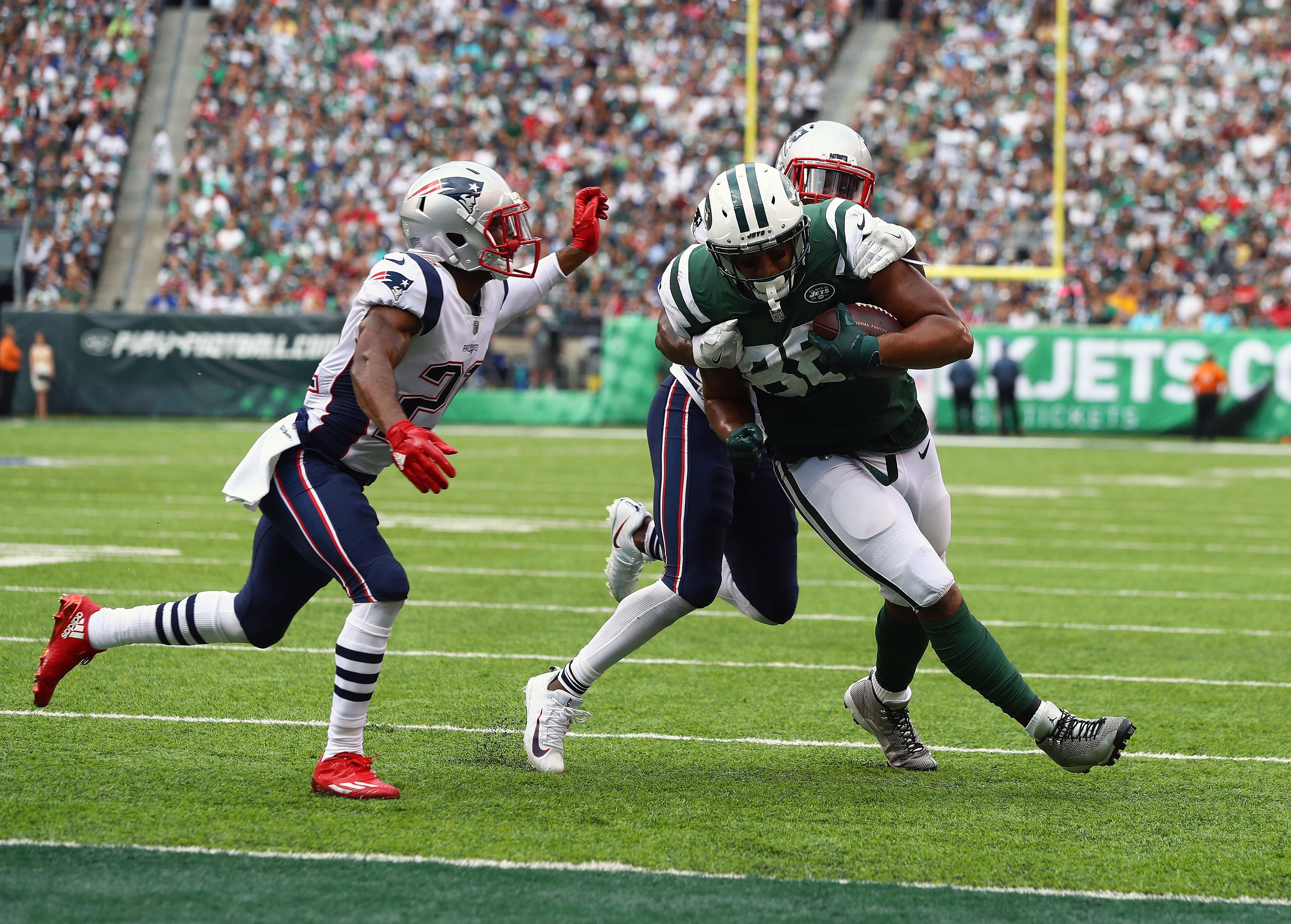
The Jets lost to the Patriots by seven points on Sunday. This season, it’s been hard for Jets fans to know how to feel about a team that was supposed to be bad but somehow entered the week tied in standings with New England, so I’d like to present some options on how to react to this 24-17 loss:
- Upset the Jets couldn’t take sole possession of the AFC East lead
- Impressed the Jets covered the spread against the defending Super Bowl champs
- Absolutely furious with everything and everybody after a controversial ruling by officials
Folks, I’m going for the third option right now. The Jets lost by seven in a game where the following play was worth zero points and a turnover instead of seven points:
Initially, it was ruled that Jets tight end Austin Seferian-Jenkins had scored a touchdown. Some Patriots tried to argue with officials that Seferian-Jenkins had been short of the end zone. But they did not appear to be telling the officials that the tight end fumbled the ball. Nobody watching the play live would have argued for that ruling. But after reviewing the play, officials determined the play resulted in a fumble out of the end zone, which gave possession to the Patriots. A Jets touchdown had become a Jets turnover.
Let’s jump into the tangled web of rules that, according to the referees, made this play a fumble. The NFL’s rule book says that a player has possession if he “has a firm grip and control of the ball with his hands or arms,” and for a second there, Seferian-Jenkins clearly did not have a firm grip or control of the ball. Therefore, in those moments, he didn’t have possession.
From any other part of the field, it wouldn’t matter whether Seferian-Jenkins regained control of the ball in bounds. A fumble that goes out of bounds in the field of play returns to the team that fumbled, either at the spot where the ball went out of bounds (if the ball goes backward) or the spot where the player fumbled (if the ball goes forward). But in the end zone, a fumble that goes out of bounds is a touchback.
If Seferian-Jenkins had possession of the ball in the end zone, the play would obviously have resulted in a touchdown. But the question is whether he had possession, and once he lost possession, the rules determining whether he regained possession are the same complex rules which are used to determine whether or not a player has recorded a catch.
According to Tony Corrente, the official who called the game, Seferian-Jenkins “did not survive the ground,” meaning he bobbled the ball after his body landed. I’m not sure that’s true: No replay I’ve seen shows that second bobble, but Corrente insists there was an angle he saw that made that bobble clear. Regardless, Corrente ruled that because of that bobble, Seferian-Jenkins never regained possession of the ball. That means even though Seferian-Jenkins was holding the ball over the end zone, the ball went out of bounds in nobody’s possession. And a ball that goes out of bounds through the end zone is a touchback.
Even if this was the right decision, how ridiculously complex is this? If the rules were correctly applied here, they are bad rules.
There’s no reason Seferian-Jenkins’s momentary loss of possession should subject him to the same rules as a player who never possessed the ball in the first place. Applying the catch rule here seems even dumber than the catch rule normally seems, because Seferian-Jenkins had already caught the ball before his bobble. We’re making him “complete the process of the catch” after he’d already completed the process of the catch. If a player starts with the ball and ends with the ball and the ball never hits the ground and nobody else touches the ball—nobody else even reacts to the free ball—we shouldn’t treat that the same way as a loose ball skipping across the field untouched.
But that wouldn’t have even mattered were it not for the incredibly complicated rules surrounding football’s Bermuda Triangle, the spot where the plane of the end zone meets the sideline. Making the goal line an all-or-nothing area is an important part of football—so many of the most exciting plays in the sport are lunges for the plane of the end zone—but a split-second play turning a touchdown to a turnover seems a bit much. There are possible fixes: We could return the ball to the spot it was fumbled as we do at every other part of the field. On Sunday, I saw somebody on Twitter suggest the ball get moved back to the 20-yard line after a fumble out of the end zone. I like that idea. But making a fumble nobody recovers into a turnover at one specific spot on the field seems ridiculously punitive.
Football is great. Poring over the rule book to see whether frame-by-frame replays match the reality we all understood live is not. But often, that’s what football fandom is.